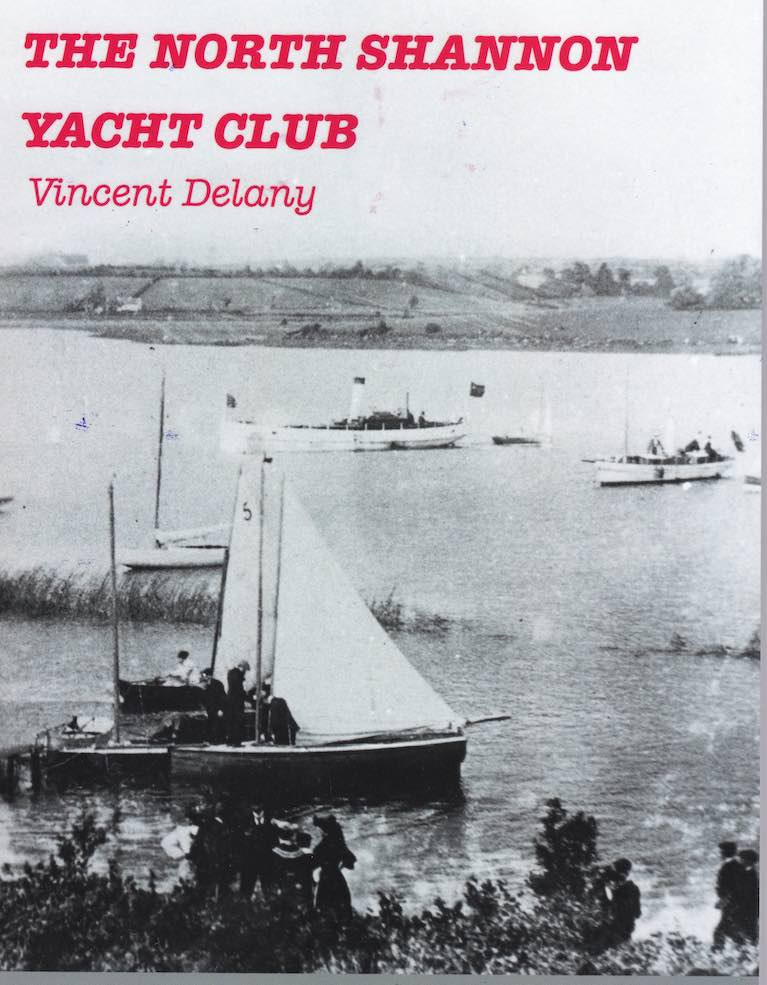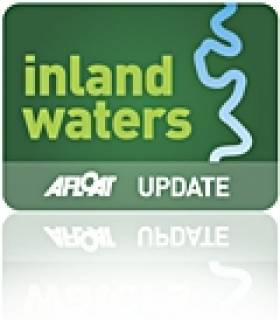Displaying items by tag: North Shannon Yacht Club
The North Shannon Yacht Club, New Book By Vincent Delany
In 1896 a yacht club was founded on Lough Boderg which lies between counties Roscommon and Leitrim.
The club thrived until 1929 when the profile of Irish society was changing from a landlord controlled society to a more democratic society.
Initially, they raced in 'One raters' possibly bought from Dublin Bay or from Belfast Lough at a time when new faster designs appeared every month, and the Dublin and Belfast owners had to keep up with the 'rat race'.
As the club developed they offered racing to 'Half-deckers,' Colleen one designs and to open 18-foot luggers.
The North Shannon Yacht Club committee was the driving force which evolved the 18-foot luggers into Shannon one designs which class thrives today.
This book tells the story of how a yacht club appeared, how it evolved, the accidents which occurred and why the club went into decline. It also describes some of the personnel involved.
The Illustrated book can be ordered from [email protected] at €20 including post and packaging.
North Shannon Yacht Club Revived on Lough Boderg
#shannonsailing – The North Shannon Yacht Club [NSYC] has been revived by a group of yachting enthusiasts, following a meeting held recently at which the club was reconstituted and officers selected.
The new officer board members are:
Commodore - Kevin Dunne
Vice Commodore - Chevalier Joe Tiernan KCHS, PC
Rear Commodore - Darren Lui MB BAO MCH FRCS (TR & Orth)
The revised club, like its predecessor, will base itself on Lough Boderg and hopes to make the club as vibrant again as it once was, by adopting an extensive range of activities, social as well as marine, including an annual regatta. In doing so, the club members hope to stimulate social, economic and boating activity in the region, much as its predecessor, whose activities made an important contribution to the life of the region, following the NSYC's original founding in 1896: as well, of course, as enjoying the delights of river and lake yachting.
Early members of the NSYC were drawn from the counties bordering the North Shannon. The club's headquarters, where the Flagstaff & Club House was situated, was located on Rin More, County Roscommon, on the western side of Lough Boderg. This location is clearly shown on the 1914 Ordnance Survey map. The clubhouse, however, was a modest affair, being no more than a galvanised iron structure, which soon earned the sobriquet "The Tin House"!
As was then typical, the first Commodore was Lord Kingston of Kilronan Castle, County Roscommon. He was followed by the Earl of Granard. The Vice Commodore was T W Delaney and J W Hogan was appointed Rear Commodore. Bob Devenish of Ivy House, Drumsna, Co. Leitrim was Secretary. One of his duties was to fly the club Burgee over the Club House, a Blue pennant with a White Eagle lapping. There was a small brass starting cannon at the Rin More location.
The Club prospered from the beginning. The central activity was the annual week-long Regatta which was held on Lough Boderg and was a rousing sight to watch. The first recorded Trophy was the Rockfield Cup presented by Major Lloyd. The progress of the Club continued uninterrupted for the next two decades. Then came the First World War of 1914 – 1918. The immediate consequence of the outbreak of hostilities, as far as Boderg was concerned, came in the form of a boy messenger, furiously pedalling his bicycle to Lough Boderg. There he delivered a telegram from the Guards Brigade H Q in London. This ordered Lord Kingston to re-join his regiment –the Irish Guards - forthwith.
With the declaration of war that 4th August 1914, many of the club members were either called to their regiments or volunteered for military service. Of these a significant number became casualties and which some would remain forever in Flanders. All club activity was suspended during the 5 year long war, with its attendant 9 million deaths.
Prior to the outbreak of war, Boderg week was the main social event of the year in the area. In this era of "The Big House" such occasions were very important and therefore well supported. Thus, Mrs Sam Russell might hold a dance in Tully House, Mrs Georgie Ffrench hold another in Dangan House or, perhaps, a garden party at Belmont, Drumsna. The Earl of Harlech, who resided at Derrycarne House situated in an ideal site on the Leitrim side of Lough Boderg, opposite Annavale Manor on the western shore, was another active
participant. This family had a reputation as being good landlords. This Peerage was created in 1876 for John Ormsby-Gore, who had represented Co Sligo and then Co Leitrim in the House of Commons, as a Conservative Party member. They afterwards represented many areas in the UK also. A later Lord Harlech went on to found Harlech Television ITV, Wales. Their participation in the NSYC seems to have ended by the "Thirties" as the club appears to have become moribund, with no activity recorded since 1933. It is regrettable that so much history is lost!
Despite a gap of 75 years between the last recorded activity of the NSYC and the registration of the revived club today, the new members hope to contribute to re-invigorate their chosen cruising grounds and to recover some of the traditions of their predecessors. Naturally, they are anxious to hear from potential new members.
About Lough Boderg
The string of loughs, of which Lough Boderg is the centre piece, is one of the prize assets of the Shannon Navigation. Together with Lough Tap to its North and Lough Bofin to its South, the lough forms a chain of large, varied and navigable waters. Drumsna marks the upstream limit of the riverine navigation and the lock below Roosky, the downstream limit. Near Drumsna, however is the entrance to the Albert Lock which gives admission to the Jamestown Cut, from which the navigation continues to such places as Boyle, Lough Key, Carrick-on-Shannon and Lough Allen and the Shannon-Erne Waterway! However, Lough Boderg hides its own secret navigation. To the west of the lough, near Annavale Manor lies the not unsubstantial Grange Lake, a long narrowish body of water and, often hidden by reeds, the cut leading to the Kilglass lough. These lakes have long enjoyed a reputation for good fishing among anglers and are a wonderful network for the navigator to explore.




























































